Ozlem’s Turkish Table (Interview, Turkish Recipes, Book Review)
By Bill Bradley, R.D.
Updated October 26, 2021
When you read someone’s writing, it’s so much more engaging when the writer loves what they’re talking about. When I read Ozlem Warren’s new cookbook Ozlem’s Turkish Table, I knew that she really loves Turkish cuisine and her native country of Turkey. I can tell that these Turkish recipes make up who she is, and are a huge part of her family. I can also see how tight-knit Turkish families are when she writes about how everybody helps to contribute to a meal, from young to old.
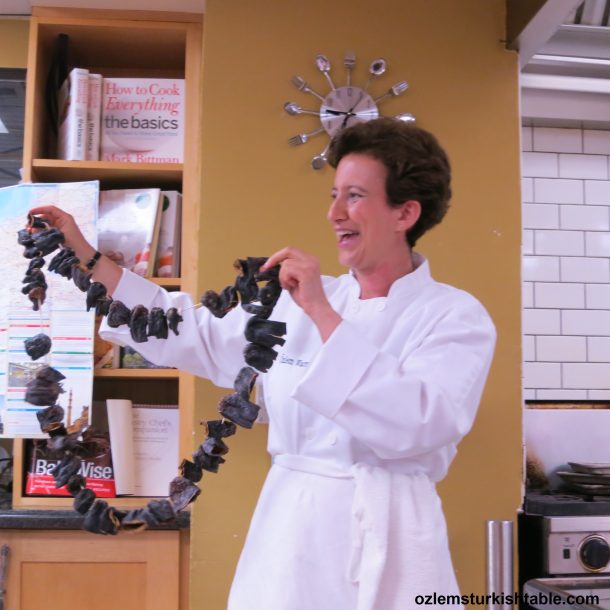
Ozlem Warren
The Turkish recipes in this cookbook are mainly from Southern Turkey and Ozlem’s hometown of Antakya. She really stresses seasonality and using the best ingredients possible. The recipes use olive oil, yogurt, bulgur wheat, eggplant, pomegranate, chili flakes, and lots of herbs and spices to create healthy, traditional recipes. When Ozlem starts trying a new recipe, the first thing she does is call her mother. This shows how these recipes are being passed down generation to generation. Ozlem is excited to share these recipes with her two children who are set to carry on the traditions.
The pictures in this cookbook are vibrant and extremely beautiful. From the spices, to the markets, to the cookware, to the finished dishes, the photos give you a true glimpse into Turkish cuisine. You can see the abundance of fresh produce there is in Turkey and understand why vegetables are used in such large quantities. If you love cookbooks with amazing food photography, this cookbook is perfect for you.
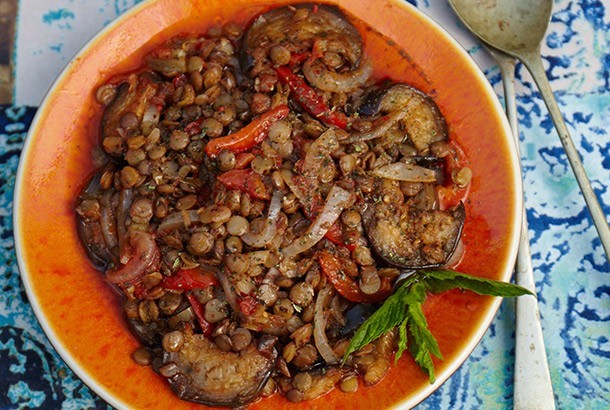
Eggplant with Lentils and Peppers in Olive Oil
One of the recipes I tried is the eggplant, lentils, and red peppers cooked in olive oil. First of all, it came out extremely delicious. The instructions were straightforward and the amounts were spot-on. The ingredients are very simple in this recipe, but the end taste has layers of flavor. I loved how the skin on the eggplant was completely cooked through. My pet peeve with eggplant recipes is when the skin is still tough. Everything cooked down perfectly. This is one of those foods that tastes even better the second time because the extra virgin olive oil and herbs and spices have time to soak in. So I wasn’t surprised, when I ate this for leftovers, that it tasted even better. I’m going to make this again soon for my friends and family. Click here for the recipe for Eggplant, Lentils, and Red Peppers Cooked in Olive Oil.
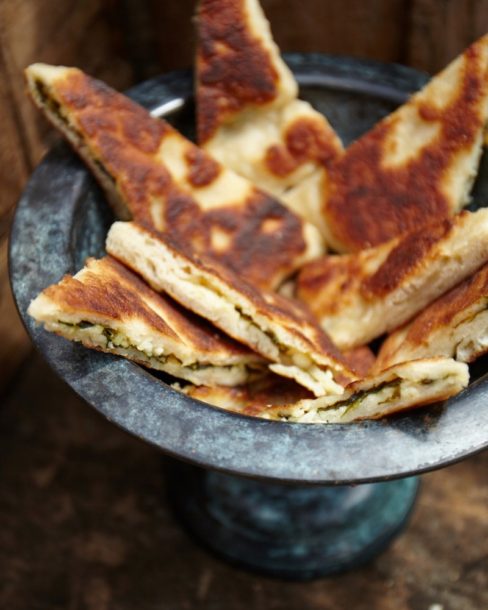
Anatolian Flat Bread with Spinach and Cheese (Gozleme)
I also made the recipe for Anatolian Flat Bread or Gozleme. This too came out incredible and I highly recommend it as a wonderful new Mediterranean Diet breakfast. It was simple to make as the dough is rolled out and then cooked on a griddle or cast iron skillet. The mixture of onion, feta and spinach is always delightful in bread and here it is no exception. I served the flatbread with Greek yogurt as a dip along with tea and coffee for my guests. Everyone loved it and it was gone in minutes. Click here for the recipe for Anatolian Flat Bread with Spinach and Cheese (Gozleme).
I look forward to trying out many of the recipes in this cookbook because I know so much time, care, and effort went into the it’s making.
Our Interview with Ozlem Warren of Ozlem’s Turkish Table:
What part of Turkey are you from? What are the foods that are eaten every day in your region of Turkey? What is eaten for Breakfast? Lunch? Dinner?
My roots go back to Southern Turkey, to the ancient city Antioch, today’s Antakya. Antakya has been a fusion of ancient civilizations and religions and this richness is reflected in its cuisine. Antakya and southern Turkish cuisine have been influenced over the centuries by the Romans, Ottomans, and neighboring Middle Eastern countries as well as the west – each has added their own richness and unique flavors. Influences from the Levantine cuisine, covering a large area of the Eastern Mediterranean, is especially evident in our shared love of meze. Antakya has recently become a UNESCO World City of Gastronomy due to its rich culinary heritage, a title the city highly deserves.
I grew up with an abundance of freshly prepared food and the importance of sharing was instilled in us since childhood. My mother, Gulcin, would cook hot lunch and dinner from scratch every day; my dad, Orhan, would go to our local pazar, farmer’s market at least a few times a week to get fresh, seasonal produce. We would all help mum to make the dishes and everyone, from extended family to friends would be warmly welcomed to our table at every opportunity, a tradition that was passed on to us from my grandparents in Antakya. Continuing this legacy, I am passionate about sharing the gastronomical and cultural riches of my homeland through its cuisine.
Seasonal, fresh produce is at the heart of our cuisine. In Antakya and the southern region of Turkey, olive oil, legumes, nuts, bulgur wheat, and grains freekeh, meat and yogurt are everyday common staple ingredients. The spices take centre stage in Antakya cuisine and even a simple, everyday meal is flavoured with at least 2-3 spices. Dishes are flavoured with the artful use of spices such as zahter or za’atar, cumin, sumac, dried mint and pul biber, Turkish red pepper flakes.
Mezes – hot and cold dips, salads as well as savoury pastries are always one of the highlights of southern Turkish cuisine, with their inviting, refreshing aromas. For instance, flavoured with Antakya’s delicious, aromatic olive oil, za’atar and pomegranate molasses, olive salad with pomegranate molasses and za’atar – Zeytin Ufeleme is a must in our home for breakfast. Another speciality worth a mention is the walnuts and red pepper paste dip, Cevizli Biber or Muhammara, made with the region’s pepper paste, biber salcasi, enjoyed as a mezze. This delicious dip always takes a place of honour at my mother’s table whenever we get together with family and friends – a favourite with all generations. Olives, a variety of cheeses, sliced cucumbers, tomatoes, peppers, eggs done different ways constitute Turkish breakfast, my favorite meal of the day! We always have hot meals, as well as a variety of salad and vegetables cooked in olive oil (as we call it “Zeytinyagli”) as part of lunch and dinner spread. Meals made with bulgur, legumes, meat and fish take center stage for lunch and dinner.
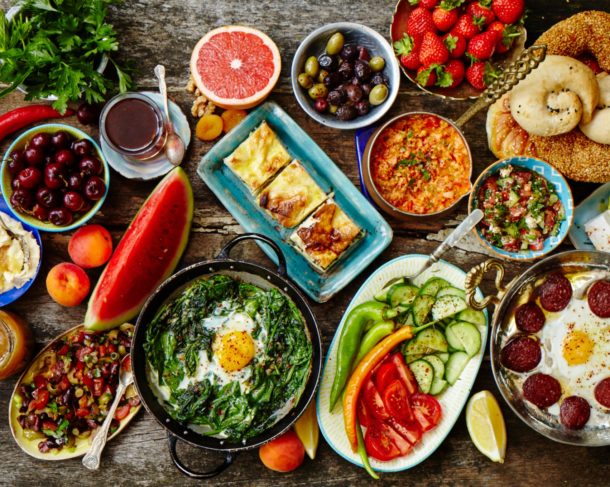
Do people eat differently in the villages vs. the city?
I presume it’s the convenience element that is apparent in cities; folks enjoy easy to prepare meals and not too time consuming; salads, casseroles that you can prep ahead of time. In rural areas, more traditional, labor intensive handmade pastas, stuffed dumplings like manti, Turkish ravioli as well as more grain, such as bulgur based dishes are prepared, especially in my hometown, Antakya.
What is eaten on special occasions?
Mezes – hot and cold dips, salads as well as savory pastries such as borek, flatbreads with toppings are always an important part of our special meals. When in Antakya, my mother would always prepare her signature dish, Upside down rice with layers of meat, aubergines and potatoes, as well as her stuffed peppers, dolma, with aromatic rice and herb.
Do you have fasting days?
Being about 99% Muslim, Turkish people observe Ramadan once a year and fast for a month, from sunrise to sunset.
Is everything cooked with extra virgin olive or are other fats used as well?
Olive oil is widely used in Turkish cuisine general and especially so in Antakya, where my roots are from. The region’s local extra virgin olive oil is used in salads, dips as well as in vegetables cooked in olive oil. Butter is also used especially when making the sweet pastries like baklava, as well as with bulgur and grain. But overall, olive oil takes center stage. Antakya is also famous for its handmade olive oil soaps, made with the region’s local olive oil.
What are the main spices that are used?
In southern Turkish cuisine, we flavor our dishes with an artful use of spices. The most common spices are the pungent cumin; red pepper flakes; tangy, citrusy sumac; refreshing dried mint as well as the fragrant za’atar. Zahtar, or also known as za’atar in the Middle East, is a popular herb as well as spice blend in southern Turkish cooking. The fresh version of zahter or za’atar looks more like a summer savoury, or a crossing of marjoram, oregano and thyme. In my home town, Antakya, dried zahter blend is a rich mixture of crushed zahter herb, sesame seeds, crushed cooked chickpeas, cumin, nigella seeds, sea salt, sumac and many more. It is a real treat, and the locals not only use it for chicken and meat marination, in salads and pastries but they also enjoy their breakfast with this mixture. They simply dip their bread into olive oil, then into the zahter, a delicious treat.
In addition, pomegranate molasses, tahini and the region’s rich red pepper paste are important specialty ingredients of Antakya cuisine.
What are the top 3 dishes that you cook the most?
Having 2 young children, we love baking; Turkish oval flatbreads, Pide with cheese, spinach and pepper topping is a family favorite. The eggplants, lentils and peppers cooked in olive oil, the recipe I share here, also appears on our table regularly. It’s such a delicious, wholesome dish. Another family favorite is baked Turkish meatballs with vegetables, always a crowd pleaser!
If we were visiting Turkey, what is something we have to eat?
You must try the Turkish breakfast with a vast selection of salads, pastries, olives, cheese, eggs done different ways and more. Turkish ravioli, manti, with garlicy yogurt sauce and dried mint and sumac on top, is always a highlight for me. Of course not forgetting the vast array of mezzes, dips, kebabs, street food, baklava and more!
How often is meat, chicken, and fish eaten?
Meat and chicken are consumed 3-4 times a week in general and fish 2-3 times a week, especially in the coastal towns.
Are wild greens part of the diet?
Indeed; wild za’atar is greatly enjoyed in southern Turkey, as well as other wild greens. Zilk, similar to Swiss chard, is another popular wild green in the region. The locals cook it with onions, peppers, pine nuts in olive oil. I have this recipe in my upcoming cookbook also.
Which street foods are popular? Is bread eaten every day?
We Turks love street food; sesame crusted bread rings (Simit); fish sandwiches sold straight from the boats (Balik Ekmek); rice with chickpeas (Nohutlu Pilav); mussels stuffed with aromatic rice (Midye Dolma) are amongst our popular street food. Bread is a major staple and eaten for breakfast, lunch, and dinner.
What is typically drunk with meals? Do people drink alcohol?
Turkish tea, cay, is very popular and drunk all through the day, in tulip shaped traditional glasses. Ayran, our yogurt based drink, as well as fresh juices are popular at meal times. Raki, our aniseed based spirit is popular and Turkish wines, native to Anatolia, are also gaining more and more popularity. Beer is popular too. Turkish coffee is a special drink for us with all its rituals and enjoyed throughout Turkey.
What are the main food holidays and are there special foods on those days?
Religious festive times like end of Ramadan is celebrated with variety of salads, dips, casseroles, kebabs, vegetables cooked in olive oil, as well as desserts such as baklava, kunefe – kadayifi, Revani – semolina sponge cake in zesty light syrup.
Recipes from Ozlem:
Ozlem’s Eggplant, Lentils, and Peppers cooked in Olive Oil Recipe Here!
Ozlem’s Anatolian Flat Bread with Spinach and Feta Recipe Here!
Check out more of Ozlem’s Recipe:
Pre-order Ozlem’s Turkish Table:
Click here to pre-order Ozlem Warren’s cookbook: Ozlem’s Turkish Table.
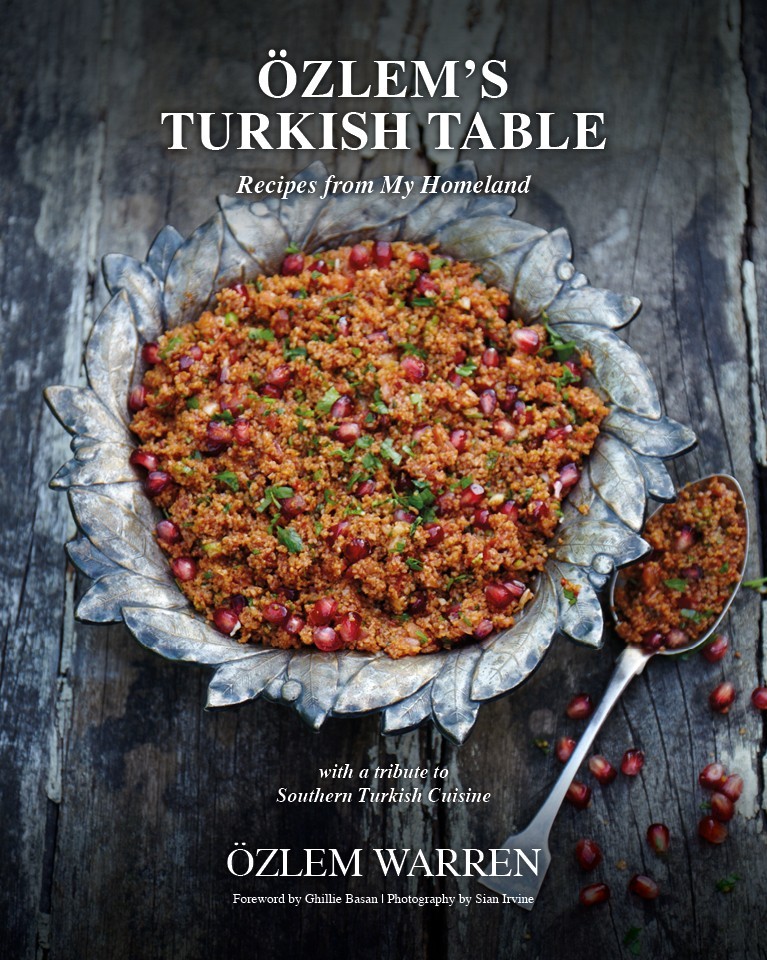








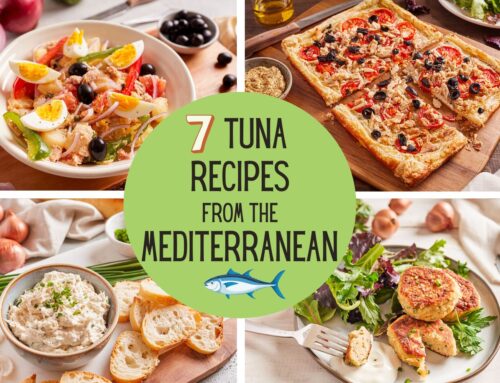
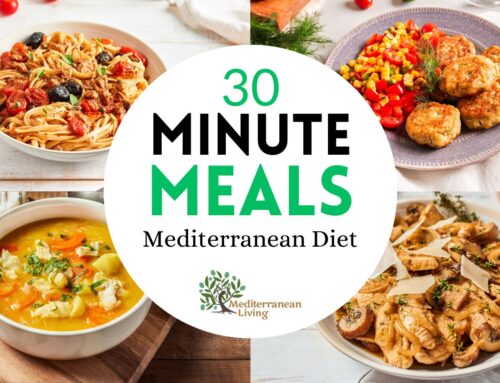
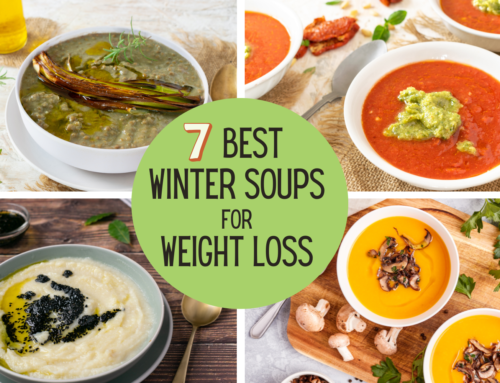
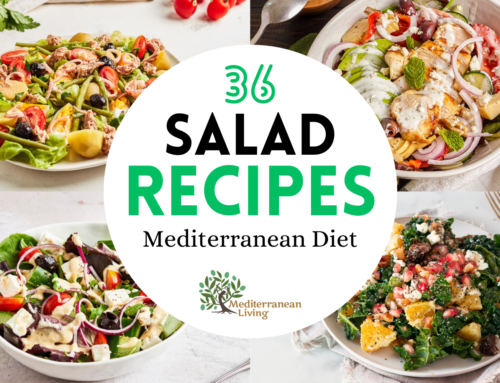
Thank you so much Bill, Mediterranean Living, for featuring my cookery book Ozlem’s Turkish Table and my recipes; i am delighted that you’re enjoying my book. We share the love of healthy, Mediterranean cuisine and it is such a pleasure to be featured here, many thanks and Afiyet Olsun! Ozlem
Thank you Ozlem! The recipes are delicious and your cookbook is beautiful.